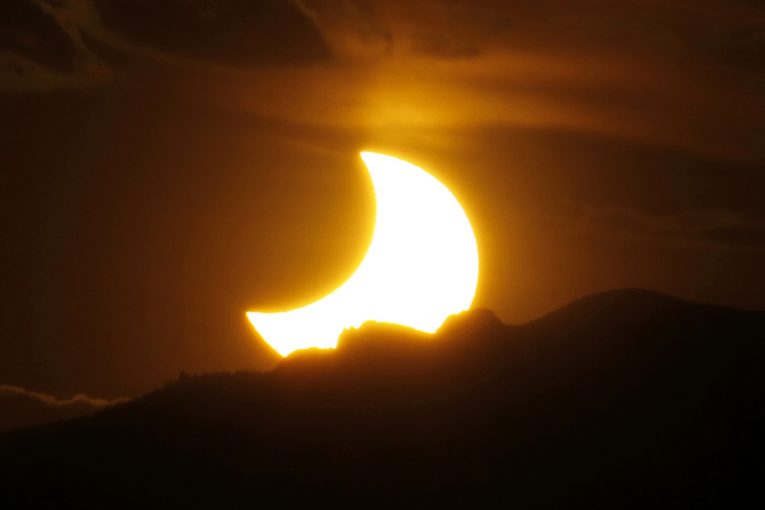
[ad_1]
On Monday, the first total eclipse of its kind in 99 years will plunge broad swaths of the U.S. into darkness, sending solar supplies sliding and testing the resilience of the power grid for the first time since the rapid rise of renewable energy.
Grid operators, utilities and electricity generators are bracing for more than 12,000 megawatts of solar power to start falling offline as the moon blocks out the sun across a 70-mile-wide (113-kilometres) corridor stretching from Oregon to South Carolina.
This is the first major test of the power grid since America started bringing large amounts of intermittent solar and wind resources onto the system. It comes just as the grid is undergoing an unprecedented transformation whereby flexible resources such as battery storage will complement growing supplies of solar and wind. Solar installations have grown ninefold since 2012 and renewable sources are forecast to supply just as much of America’s electricity demand as natural gas by 2040.
The U.S. power grid “hasn’t seen this sort of natural phenomenon since solar became a thing,” Nicholas Steckler, an analyst at Bloomberg New Energy Finance, said. “With so many renewables coming online, especially in the last five to ten years, there is more impact from an eclipse.”
The eclipse is expected to reach the U.S. at 9:05 a.m. local time at Lincoln Beach, Oregon, and last for about four hours. Back-up, natural-gas plants and hydroelectric dams are at the ready to fill solar’s void along with new technologies to control demand.
Regional grid operators from California to Pennsylvania plan to provide real-time updates on how their networks are handling fluctuating power flows as millions of Americans head outside to gaze at the sky.
The celestial event provides an opportunity to test plants, software and markets refined in recent years in anticipation of the day when renewable energy becomes the dominant source of power. Bloomberg New Energy Finance has projected that renewables will supply more than half of the world’s electricity in 2040.
California, home to more solar power than any other state, will tap into its network of hydropower generators and gas plants that can ramp up quickly to fill a 6,000-megawatt gap in solar energy. The state also embarked upon a public relations campaign to convince residents to conserve energy to minimize greenhouse-gas emissions while solar plants are down.
In North Carolina, part of which will see total darkness during the eclipse, Duke Energy Corp. expects about 2,000 megawatts, or 80 per cent, of utility-scale solar farms to go offline. The utility will treat it like a “gradual sunset,” said Tammie McGee, a company spokeswoman, estimating that as many as 1,200 megawatts of gas generation will be called upon to pick up the slack.
Wholesale electricity prices may rally on solar’s sudden slide. The eclipse will start curbing power supplies a little after 9 a.m. on the West Coast, just when the work week is starting and demand is taking off. According to energy data provider Genscape Inc., the event may extend the typical period of high power prices in California by about two hours.
Prices will probably retreat as soon as the moon starts moving past the sun and solar farms return, Genscape said. And the market impact in Texas, the Midwest and the East Coast will be limited because the region’s home to smaller concentrations of solar.
[ad_2]
You can read more of the news on source
